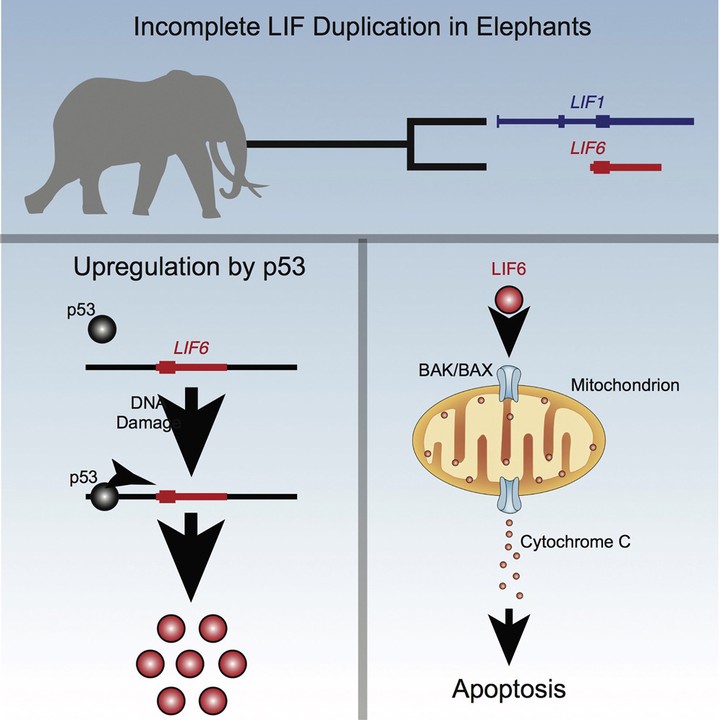Pervasive duplication of tumor suppressor genes preceded parallel evolution of large bodied Atlantogenatans

Abstract
Cancer is an intrinsic disease of multicellular organisms. Within a species, the size of an animal, - correlated with the individual’s number of cells - and its lifespan - correlated with increasing cellular damage over time - positively correlate with the risk any individual has to form tumors. Between species, however, we do not observe any correlation between size, lifespan, and cancer, a phenomenon that referred to as Peto’s Paradox. Elephants are a particularly interesting member of this class of paradoxical animals, since they are a set of large species deeply nested in a clade of smaller species, indicating a recent gain of size. Recent work has identified several individual cases of gene duplicates contributing to the increased cancer resistance of elephants, which suggests that duplication of tumor suppressor genes may play a more general role in mediating Peto’s Paradox by increasing cancer resistance in large, long-lived species. By using a Reciprocal Best-Hit BLAT search approach, we investigated copy numbers of all protein-coding genes in Atlantogenatan genomes to see if there is any correlation between the copy number of duplicates and changes body size along the phylogenetic tree. From an initial set of 18,011 protein-coding genes in hg38, we identified a median of 13,880 genes in Atlantogenatan genomes, of which a median of 940 genes are duplicated. We find that, just as body size fluctuates throughout Atlantogenata, genes involved in tumor suppressor pathways are also duplicated throughout the phylogenetic tree. Extant species of elephants, however, show active transcription of both canonical and duplicated copies of tummor suppressors that duplicated prior to and during their sudden increase in body size, suggesting that the duplication of tumor suppressor genes facilitates the evolution of increased body size by compensating for the increased cancer risk.